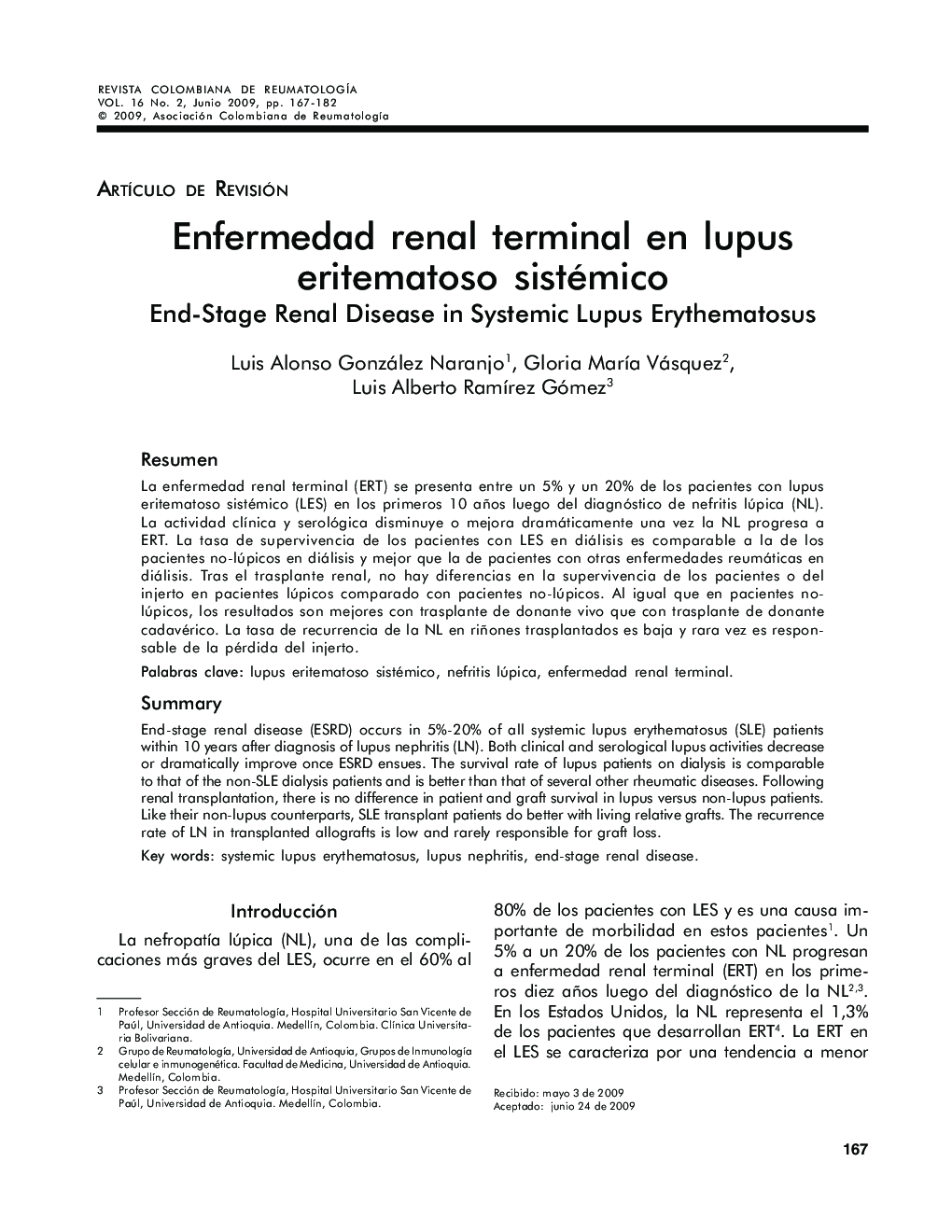| Article ID | Journal | Published Year | Pages | File Type |
|---|---|---|---|---|
| 3385601 | Revista Colombiana de Reumatología | 2009 | 16 Pages |
Abstract
End-stage renal disease (ESRD) occurs in 5%-20% of all systemic lupus erythematosus (SLE) patients within 10 years after diagnosis of lupus nephritis (LN). Both clinical and serological lupus activities decrease or dramatically improve once ESRD ensues. The survival rate of lupus patients on dialysis is comparable to that of the non-SLE dialysis patients and is better than that of several other rheumatic diseases. Following renal transplantation, there is no difference in patient and graft survival in lupus versus non-lupus patients. Like their non-lupus counterparts, SLE transplant patients do better with living relative grafts. The recurrence rate of LN in transplanted allografts is low and rarely responsible for graft loss.
Keywords
Related Topics
Health Sciences
Medicine and Dentistry
Immunology, Allergology and Rheumatology
Authors
Luis Alonso González Naranjo, Gloria MarÃa Vásquez, Luis Alberto RamÃrez Gómez,
